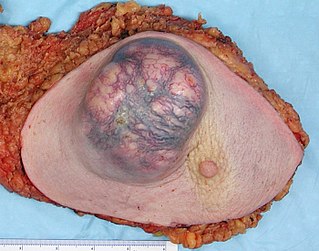 W
WThe long-term heavy consumption of alcohol can cause severe detrimental effects. Health effects associated with alcohol intake in large amounts include an increased risk of developing an alcohol use disorder, malnutrition, chronic pancreatitis, congestive heart failure, atrial fibrillation, car accidents and injuries, gastritis, stomach ulcers, alcoholic liver disease, certain types of dementia, and several types of cancer. In addition, damage to the central nervous system and peripheral nervous system can occur from chronic heavy alcohol consumption. Even light and moderate alcohol consumption increase the risk for developing certain types of cancer.
 W
WThe short-term effects of alcohol consumption – due to drinking beer, wine, distilled spirits or other alcoholic beverages – range from a decrease in anxiety and motor skills and euphoria at lower doses to intoxication (drunkenness), stupor, unconsciousness, anterograde amnesia, and central nervous system depression at higher doses. Cell membranes are highly permeable to alcohol, so once alcohol is in the bloodstream, it can diffuse into nearly every cell in the body.
 W
WAlcohol packaging warning messages are warning messages that appear on the packaging of alcoholic beverages concerning their health effects. They have been implemented in an effort to enhance the public's awareness of the harmful effects of consuming alcoholic beverages, especially with respect to foetal alcohol syndrome and alcohol's carcinogenic properties. In general, warnings used in different countries try to emphasize the same messages. Warnings for some countries are listed below. Such warnings have been required in alcohol advertising for many years, although the content of the warnings differ by nation.
 W
WAlcoholic polyneuropathy is a neurological disorder in which peripheral nerves throughout the body malfunction simultaneously. It is defined by axonal degeneration in neurons of both the sensory and motor systems and initially occurs at the distal ends of the longest axons in the body. This nerve damage causes an individual to experience pain and motor weakness, first in the feet and hands and then progressing centrally. Alcoholic polyneuropathy is caused primarily by chronic alcoholism; however, vitamin deficiencies are also known to contribute to its development. This disease typically occurs in chronic alcoholics who have some sort of nutritional deficiency. Treatment may involve nutritional supplementation, pain management, and abstaining from alcohol.
 W
WThe relationship between alcohol and breast cancer is clear: drinking alcoholic beverages, including wine, beer, or liquor, is a risk factor for breast cancer, as well as some other forms of cancer. Drinking alcohol causes more than 100,000 cases of breast cancer worldwide every year.
 W
WAlcoholic beverages are classified by the International Agency for Research on Cancer (IARC) as a Group 1 carcinogen. IARC classifies alcoholic beverage consumption as a cause of female breast, colorectal, larynx, liver, esophagus, oral cavity, and pharynx cancers; and as a probable cause of pancreatic cancer.
 W
WEthanol is the type of alcohol found in alcoholic beverages. It is a volatile, flammable, colorless liquid that acts as a central nervous system depressant. Ethanol can impair different types of memory.
 W
WFetal alcohol spectrum disorders (FASDs) are a group of conditions that can occur in a person whose mother drank alcohol during pregnancy. Symptoms can include an abnormal appearance, short height, low body weight, small head size, poor coordination, behaviorial problems, learning difficulties and problems with hearing or sight. Those affected are more likely to have trouble in school, legal problems, participate in high-risk activities and have problems with alcohol or other drugs. The most severe form of the condition is known as fetal alcohol syndrome (FAS). Other types include Partial Fetal Alcohol Syndrome (pFAS), Alcohol-Related Neurodevelopmental Disorder (ARND), Static Encephalopathy, Alcohol-Related Birth Defects (ARBD), and Neurobehavioral Disorder Associated With Prenatal Alcohol Exposure (ND-PAE). Some accept only FAS as a diagnosis, seeing the evidence as inconclusive with respect to other types.
 W
WAlcohol flush reaction (AFR) is a condition in which a person develops flushes or blotches associated with erythema on the face, neck, shoulders, and in some cases, the entire body after consuming alcoholic beverages. The reaction is the result of an accumulation of acetaldehyde, a metabolic byproduct of the catabolic metabolism of alcohol, and is caused by an aldehyde dehydrogenase 2 deficiency.
 W
WAlcoholic hepatitis is hepatitis due to excessive intake of alcohol. Patients typically have a history of decades of heavy alcohol intake, typically 8-10 drinks per day. It is usually found in association with fatty liver, an early stage of alcoholic liver disease, and may contribute to the progression of fibrosis, leading to cirrhosis. Symptoms may present acutely after a large amount of alcoholic intake in a short time period, or after years of excess alcohol intake. Signs and symptoms of alcoholic hepatitis include jaundice, ascites, fatigue and hepatic encephalopathy. Mild cases are self-limiting, but severe cases have a high risk of death. Severe cases may be treated with glucocorticoids.
 W
WAlcohol intoxication, also known as drunkenness or alcohol poisoning, is the negative behavior and physical effects caused by a recent consumption of alcohol. Symptoms at lower doses may include mild sedation and poor coordination. At higher doses, there may be slurred speech, trouble walking, and vomiting. Extreme doses may result in a respiratory depression, coma, or death. Complications may include seizures, aspiration pneumonia, injuries including suicide, and low blood sugar. Alcohol intoxication can lead to alcohol-related crime with perpetrators more likely to be intoxicated than victims.
 W
WAlcoholic liver disease (ALD), also called alcohol-related liver disease (ARLD), is a term that encompasses the liver manifestations of alcohol overconsumption, including fatty liver, alcoholic hepatitis, and chronic hepatitis with liver fibrosis or cirrhosis.
 W
WAlcoholic lung disease is disease of the lungs caused by excessive alcohol. The term 'alcoholic lung disease' is not a generally accepted medical diagnosis, and "the association between alcohol abuse and acute lung injury remains largely unrecognized, even by lung researchers".
 W
WWernicke–Korsakoff syndrome (WKS) is the combined presence of Wernicke encephalopathy (WE) and alcoholic Korsakoff syndrome. Due to the close relationship between these two disorders, people with either are usually diagnosed with WKS as a single syndrome. It mainly causes vision changes, ataxia and impaired memory.
 W
WThe health effects of wine are mainly determined by its active ingredient alcohol. Some studies found that, when comparing people who consume alcohol, drinking small quantities of alcohol is associated with a decreased risk of heart disease, stroke, diabetes mellitus, metabolic syndrome and early death. However, other studies found no such effect.